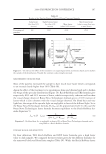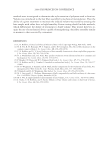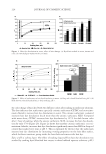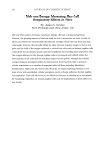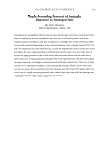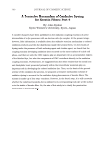JOURNAL OF COSMETIC SCIENCE 184 Table IV Volume Difference Data for Hair Treated with Various Polymers ΔV (cm3) VP/acrylates/lauryl methacrylate copolymer 22.67 ± 3.52 VCL/VP/DMAEMA copolymer 40.10 ± 6.36 Polyquaternium-69 25.07 ± 5.72 Isobutylene/ethylmaleimide/hydroxyethylmalemide copolymer 33.67 ± 17.36 VP/VCL/DMAPA acrylates copolymer 40.33 ± 16.30 High MW Polyimide-1 22.37 ± 13.54 Polyimide-1 56.93 ± 16.62 PVP K90 81.17 ± 16.60 PVP K30 154.30 ± 12.38 Figure 11. Straight hair technique. Three-dimensional surface plots for hair treated with PVP K30 (a) be- fore and (b) after exposure to 90% RH. Tests were conducted using the conventional hair tress technique. ΔV represents the difference in volume before and after humidity exposure. Each value represents the average of three measurements and is reported with standard deviation.
2008 TRI/PRINCETON CONFERENCE 185 methods were investigated to determine the style retention of polymers used as fi xatives. Volume was introduced to the hair fi ber assembly by mechanical manipulation. Then the ability of a given treatment to maintain the induced volume was tested by stressing the hair sample with either force or high humidity. Future testing should include methods, which differentiate the ability of treatments to build volume. This would, however, re- quire the use of a mechanical device capable of manipulating a hair fi ber assembly similar in manner to that exercised by consumers. REFERENCES (1) C. R. Robbins, Chemical and Physical Behavior of Hair, 3rd ed. (Springer-Verlag, New York, 1994). (2) N. E. Yin, R. H. Kissinger, W. S. Tolgyesi, and E. M. Cottington, The effect of fi ber diameter on the cosmetic aspects of hair, J. Soc. Cosmet. Chem., 28, 139–150 (1976). (3) C. R. Robbins and G. V. Scott, Prediction of hair assembly characteristics from single fi ber properties, J. Soc. Cosmet. Chem., 29, 783–792 (1978). (4) D. L. Wedderburn and J. K. Prall, Hair product evaluation: From laboratory bench to consumer and back again, J. Soc. Cosmet. Chem., 24, 561–576 (1973). (5) P. Hough, J. E. Huey, and W. S. Tolgyesi, Hair body, J. Soc. Cosmet. Chem., 27, 571–578 (1976). (6) C. R. Robbins and R. J. Crawford, A method to evaluate hair body, J. Soc. Cosmet. Chem., 35, 369–377 (1984). (7) H.-D. Weigmann, Y. Kamath, and H. Mark, Radial compression for the evaluation of hair body, Proc. Quinquennial Int. Wool Textile Res. Conf., Pretoria, South Africa, 111, 473–486 (1980). (8) Y. Kamath and H.-D. Weigmann, Hair body, J. Soc. Cosmet. Chem., 47, 256–259 (1996). (9) M. L. Garcia and L. J. Wolfram, Measurement of bulk compressibility and bulk resiliency of a hair mass, Proc. 10th IFSCC Congress, Sydney, Australia (1978). (10) M.-S. Wu, A simple method for measurement of hair volume, J. Soc. Cosmet. Chem., 33, 85–92 (1982). (11) J. Clarke, C. R. Robbins, and C. Reich, Infl uence of hair volume and texture on hair body of tresses, J. Soc. Cosmet. Chem., 42, 341–350 (1991).
Purchased for the exclusive use of nofirst nolast (unknown) From: SCC Media Library & Resource Center (library.scconline.org)














































































